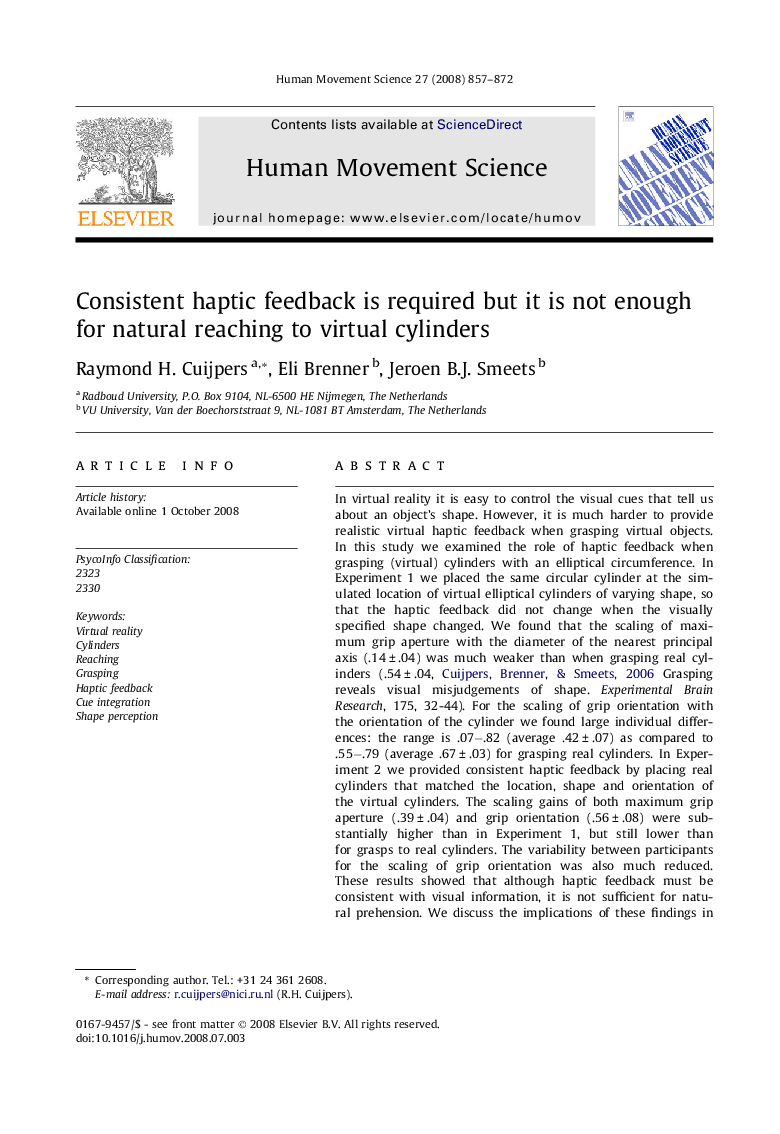| Article ID | Journal | Published Year | Pages | File Type |
|---|---|---|---|---|
| 928875 | Human Movement Science | 2008 | 16 Pages |
In virtual reality it is easy to control the visual cues that tell us about an object’s shape. However, it is much harder to provide realistic virtual haptic feedback when grasping virtual objects. In this study we examined the role of haptic feedback when grasping (virtual) cylinders with an elliptical circumference. In Experiment 1 we placed the same circular cylinder at the simulated location of virtual elliptical cylinders of varying shape, so that the haptic feedback did not change when the visually specified shape changed. We found that the scaling of maximum grip aperture with the diameter of the nearest principal axis (.14 ± .04) was much weaker than when grasping real cylinders (.54 ± .04, Cuijpers, Brenner, & Smeets, 2006 Grasping reveals visual misjudgements of shape. Experimental Brain Research, 175, 32-44). For the scaling of grip orientation with the orientation of the cylinder we found large individual differences: the range is .07−.82 (average .42 ± .07) as compared to .55−.79 (average .67 ± .03) for grasping real cylinders. In Experiment 2 we provided consistent haptic feedback by placing real cylinders that matched the location, shape and orientation of the virtual cylinders. The scaling gains of both maximum grip aperture (.39 ± .04) and grip orientation (.56 ± .08) were substantially higher than in Experiment 1, but still lower than for grasps to real cylinders. The variability between participants for the scaling of grip orientation was also much reduced. These results showed that although haptic feedback must be consistent with visual information, it is not sufficient for natural prehension. We discuss the implications of these findings in terms of the integration of visual information with haptic feedback.
